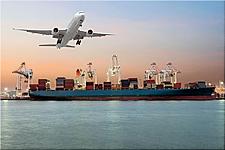 |
Shortages of freight capacity, coupled with ongoing demand, continue to elevate shipping costs globally for both ocean and air cargo. The consensus is that freight rates will remain high throughout 2022 for both ocean and air carriers.
In terms of ocean freight, some industry experts are predicting a rapid recovery to 2019 rate levels, potentially in late 2022, however, this is contingent upon a number of factors such as no significant disruptions to logistics operations and a return to pre-pandemic demand trends. Other industry insiders suggest ocean freight rates look set to stay elevated for another two years, as logistics disruption continues to restrict capacity.
Things are expected to revert to some normalcy after 2022, as a flurry of new vessel orders in the last few months is set to change container shipping’s supply-demand dynamic. Even with the influx of new equipment coming on board, it is expected that ocean freight rates will not stabilize until 2024.
Recently we have seen ocean freight rates on a slight downswing, however, many view this as a short-term market adjustment. One reason for this “temporary” downturn relates to COVID shutdowns in various parts of China, affecting shipping volumes and reducing demand in the short term.
Similar to ocean freight, airfreight rates remain strong, with little relief in sight. The lingering effect of COVID is that a reduction in international passenger flights has also reduced availability of belly space for cargo. Since upwards of 50% of all air cargo moves this way, reduced capacity continues to keep rates high. Passenger demand remains far below pre-COVID levels. Numbers for February 2022 were down 45.5% compared to February 2019, with international traffic down 59.6% and domestic traffic down by 21.8%.
While demand for ocean and air cargo shipping is expected to continue, at least in the near term, ongoing external influences must be considered. For example, how will Omicron and future variants impact North American consumer demand as well as effective shipping capacity and factory output? Also, how much of rate strength is driven by higher import demand and how much is driven by lower effective shipping capacity? Finally, consumer spending appears to be returning to more typical pre-COVID levels, as people have resumed more normal daily routines, while strong inflation and higher gasoline prices also caused consumers to cut back on discretionary spending. All of the above will influence international shipping trends, but to what degree, remains unclear.
For more information, contact David Lychek, Director – Ocean & Air Services.
















